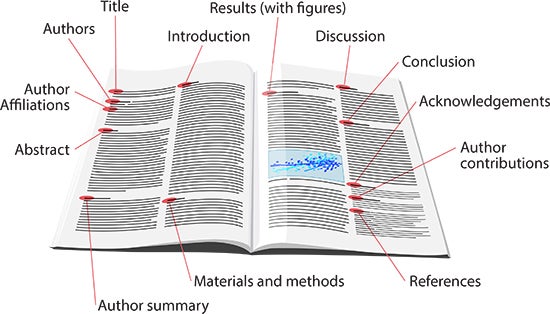
You can contact the Learning Hub via email:
 learninghub@tees.ac.uk
learninghub@tees.ac.uk
Find us and check our opening hours
Feedback on our services
If it does then look at the following sections of the article in this order to further refine your decision as to whether to use it or not.
This reading strategy consists of reading the article quickly in order to find out what it is about and how it is organised. This can be done by reading certain areas of an article for specific keywords that will point to potentially useful content.
Before you start skimming, you need to think of what you want from the article and what keywords or terms you hope to find. Think of two or three terms that describe what you want to know, and as you skim, keep an eye out for those terms. Skimming without knowing what you hope to find can cause drowsiness and lack of attention, defeating the purpose of skimming.
Initially, just read the first sentence of each paragraph. This introductory sentence usually describes what information will follow in that paragraph, if the start of a sentence holds no promise of it giving you the information you want, skip to the next sentence
When skimming over a longer section of text, move your eyes vertically as much as you move your eyes horizontally. In other words, you move your eyes down the page as much as you move them from side to side.
Read the title, the abstract, the introduction etc. and any headings and subheadings
Read the first sentence of each paragraph
Read text by checking for keywords rather than trying to fully understand the information in the sentence
Look at illustrations (photographs, pictures, charts, diagrams, tables)

Moeller, K. (2014) Anatomy of an Article: ASU - Ask A Biologist. Available at: https://askabiologist.asu.edu/explore/anatomy-of-an-article (Accessed: 29 August 2019)
The abstract is presented at the top of the article and is a concise summary of the whole article highlighting the focus, study results and conclusion(s) of the article.
Read it in depth, It will help you identify whether the article is useful to you.

In this section, the authors introduce their topic and explain the purpose of the study and present their main argument and hypothesis.

Scan over the Introduction for key ideas which provide a background to the study, look for why its important and how it adds to existing knowledge in the field. Also scan for a summary of previous research in the field that the authors may have found in their 'Literature Review'.

The methods section covers what kind of research was carried out and how. Read about the Methods/Methodology. If what you've read addresses your research question, consider the following questions.
 Read the results and analysis, this section gives the detailed findings. Sometimes these can appear off-putting so try to identify the main points.
Read the results and analysis, this section gives the detailed findings. Sometimes these can appear off-putting so try to identify the main points.
There are often tables of data as well as text, you might find it quicker to look at the tables of data for an overview. However if graphs and statistics are confusing, focus on the explanations around them.
The conclusion is near the end of the article, it may have other names, such as discussion.
Reading this section will enable you to see the main findings from the paper.

It may include how the study addressed the author's hypothesis, how it contributes to the field, the strengths and weaknesses of the study, and recommendations for future research. Its good to understand these conclusions before reading the detail of the results and the methodology
 These give credit to other scientists and researchers and show you the basis the authors used to develop their research
These give credit to other scientists and researchers and show you the basis the authors used to develop their research
The list of references, or works cited, should include all of the materials the authors used in the article. The references list can be a good way to identify additional sources of information on the topic
This work is licensed under an Attribution-NonCommercial-ShareAlike 4.0 International Deed.